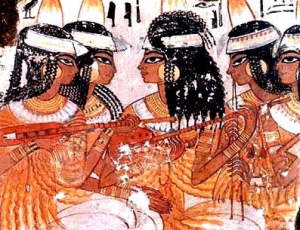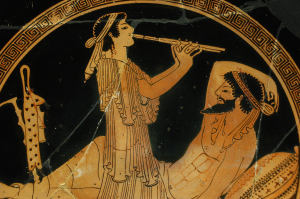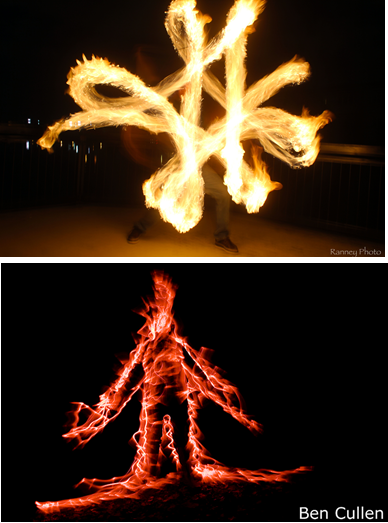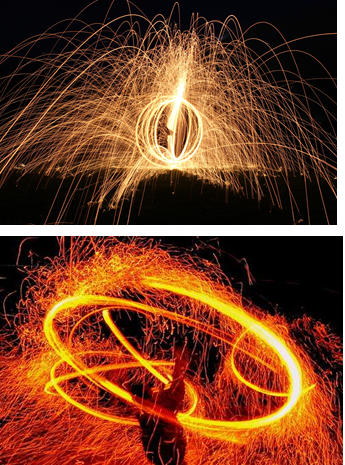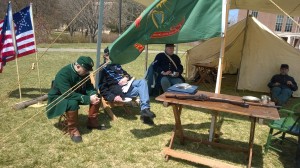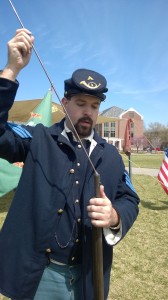Today I got to do something very exciting and relevant for world-building – I got to see the Dead Sea scrolls! For those of you who aren’t aware, the Dead Sea scrolls have been labeled as the most important archeological find of the 20th century. They are the oldest known copies of portions of the Old Testament, including the Psalms, Job, Deuteronomy, and Isaiah. They survived in clay jars in a cave for over 2000 years before being discovered and preserved by archaeologists. Seeing them, and other ancient Israeli artifacts, today and learning about historic artifact preservation definitely gave me appreciation for ancient workmanship and modern science. As a fantasy novelist, it also gave me good source material for how to make a culture feel old and have a sense of history. Here are three things that you might incorporate into your next fantasy world…
1. Clay and stone last a long time and are relatively common artifacts to find, though not always intact.
Plain clay pots, bowls, and jars were used by nearly everyone in the days before mass production of metal containers. If you’re writing in an ancient fantasy setting, your middle class and lower class individuals will most likely have a plethora of clay objects. If you’re writing about a newer civilization, any artifacts they uncover will probably be surrounded by broken pottery the way that you find discarded styrofoam plates and cups in trashcans today. Further, building stones rarely get moved far from where they were torn down by invading armies. They might get used to build other things, or they might be piled over with new dirt and rock and a new building set atop the ruins of the former, but they can remain for thousands of years with little visible change. Further, old stones used for building walls and common houses may not have been smoothed or finished on all sides; they may look and feel relatively rough, even if they were exposed to weather for many centuries
2. Ancient coins can be very intricate and artistic – and tiny!
Some coins that we saw were millennia old, with faint raised lines in them that spoke of emperors and the year and place in which the coins were created. In so doing, the coins spoke to the skill and craftsmanship of ancient gold- and silversmiths who created tiny, detailed molds without the aid of modern machinery or magnification. A coin no bigger than a thumbnail could bear an etching of an animal or bird or other symbol, and words around the edge and on the back that wished an emperor eternal reign and happiness. Coins were also used in ancient times that were roughly half the size of a modern dime. (Better not have any holes in your pockets!) They weren’t worth much, but they can and did exist as part of a monetary system.
3. It is difficult to preserve writing – but worth it!
Primitive societies tend to write on organic matter such as animal skins or reed paper, which decomposes relatively quickly. Ink also fades over time, and parchment crumbles at the touch when it gets old. All of this makes it very difficult for societies to learn from the original written documents of ancient societies. This makes the rare documents that do survive that much more valuable to historians and anyone else who cares about the veracity of what has been attested to for hundreds of years. One thing I was surprised by upon seeing fragments of the Dead Sea scrolls was how neat and clear the writing on the fragments was. It was faded and often very hard to distinguish the black ink from the dark brown of the scroll on which it was written, but the letters themselves were clearly penned in tight, even rows with a precise script that looked almost as though it could have been printed by computer. When ink and writing materials are expensive and a mistake in a holy book could mean error, confusion, or blasphemy passed down to future generations, it makes sense that writers would be careful. But even so, the level of precision maintained by these preservers of history and tradition was remarkable and impressive even by today’s standards.
New technology has also been useful for preserving these ancient documents. Imaging software now checks for decay in scrolls by photographing them every month at a large set of wavelengths, then comparing images month to month to see if there is any change that could necessitate adjustments to humidity, light, temperature, and so forth. Other modern tools can detect the chemical and slight differences between ink and the material on which it was written, so that even ink tracings that faded to the point that they cannot be seen by the human eye can be recorded, processed, and studied. What might future technology be able to do to preserve and record history? How might artifacts from a world you create be treated and viewed by your main characters? Are the cities they live in built on the ruins of others? Do they have museums or ancient holy sites? If not, why not? If so, what types of artifacts are housed there?
